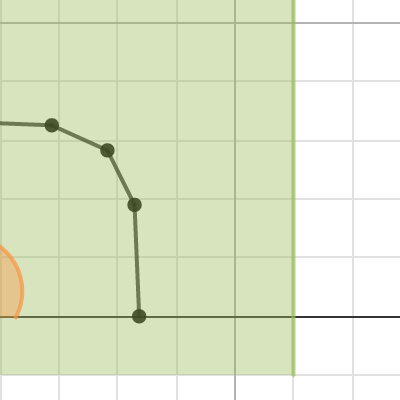You can create a baseball field on a graphing calculator. It’s easier than you think.
Graphing calculators are powerful tools, often used for math and science. But did you know they can also create art? Making a baseball field on your graphing calculator is a fun way to learn its features. You don’t need to be an artist or a math genius.
This simple project will show you how to use basic functions and commands. By the end, you’ll have a neat baseball field on your calculator screen. Ready to get started? Let’s dive into the steps and unleash your inner artist!
Setting Up The Calculator
To create a baseball field on a graphing calculator, proper setup is key. Begin by ensuring your calculator is ready for new data. This step helps prevent errors and confusion later on.
Clearing Previous Data
First, clear any old data from your calculator. Press the “2nd” button, followed by “MEM” (usually found above the “+” button). Select “Reset” and choose “All RAM.” Confirm by pressing “2” and then “ENTER.” This step erases old graphs and functions.
Accessing Graphing Mode
Next, access the graphing mode on your calculator. Press the “Y=” button to open the graphing screen. This screen is where you will enter the equations for your baseball field.
Make sure no equations are currently active. If any equations are present, clear them by pressing “CLEAR.” Your calculator is now ready for entering new equations.
Creating The Field Outline
Creating the field outline on a graphing calculator is an exciting task. It helps you visualize a baseball field from a mathematical perspective. This section will guide you through plotting the bases and drawing the infield diamond.
Plotting The Bases
To begin, you need to plot the bases. Use the following coordinates:
- Home Plate: (0,0)
- First Base: (90,0)
- Second Base: (90,90)
- Third Base: (0,90)
These coordinates represent a standard baseball field. They help you get the correct layout. Enter these points into your graphing calculator.
Here’s a simple code snippet to input the bases:
{(0,0), (90,0), (90,90), (0,90)}
Drawing The Infield Diamond
Next, connect the bases to form the infield diamond. Draw lines between each pair of bases:
- From Home Plate to First Base
- First Base to Second Base
- Second Base to Third Base
- Third Base to Home Plate
These lines form the diamond shape. Here’s how to represent it on your calculator:
Line[(0,0), (90,0)]
Line[(90,0), (90,90)]
Line[(90,90), (0,90)]
Line[(0,90), (0,0)]
Input these lines into your calculator. This completes the infield diamond. Now, you have a clear outline of the baseball field.
Designing The Outfield
To create a baseball field on a graphing calculator, you need to start with the outfield. The outfield includes the area beyond the infield, where most hits land. Designing this part is essential for an accurate and realistic field.
Defining The Outfield Perimeter
First, define the perimeter of the outfield. Use simple shapes like circles or ellipses. For a standard baseball field, the outfield fence often forms an arc.
You can use the equation of a circle: (x - h)^2 + (y - k)^2 = r^2. Here, (h, k) is the center of the circle and r is the radius.
For example, if the center is at (0,0) and the radius is 150 units, the equation will be: x^2 + y^2 = 150^2. This equation forms a circular outfield.
To plot this on your calculator, follow these steps:
- Press the Y= button.
- Enter the equation
Y = sqrt(150^2 - X^2). - Enter the equation
Y = -sqrt(150^2 - X^2)for the lower half.
The graph will show a circle representing the outfield perimeter.
Adding Foul Lines
Foul lines extend from home plate to the outfield fence. They mark the boundary between fair and foul territory.
To draw the foul lines, use two straight lines extending from the origin. They typically form a 90-degree angle.
You can use the equations Y = mX for one line and Y = -mX for the other. Here, m is the slope.
For example, if the slope is 1, the equations will be:
Y = XY = -X
Enter these equations in the Y= menu of your graphing calculator. The lines will appear, extending from the origin to the edges of the screen.
These foul lines complete the basic design of your outfield.

Credit: www.nytimes.com
Adding Field Details
Adding field details to your baseball field on a graphing calculator enhances realism. You will learn how to mark the pitcher’s mound and position the batter’s box. These steps will make your field more accurate.
Marking The Pitcher’s Mound
The pitcher’s mound is a key part of the field. To mark it, start by locating the center of your field. This is usually at the origin (0,0) on your graph. Draw a small circle around this point. This represents the mound. Ensure the circle is proportional to the rest of the field. You can adjust the size based on the scale you are using. A typical mound has a radius of about 9 feet.
Positioning The Batter’s Box
The batter’s box is where the batter stands. To position it, draw two rectangles on either side of the home plate. Home plate is usually at the bottom center of your graph. Each rectangle should be about 4 feet wide and 6 feet long. Ensure the boxes are parallel to each other. Leave a small gap between the home plate and the boxes.
These details will make your baseball field look more realistic. They help you visualize the game better on your graphing calculator.
Optimizing The Graph
Optimizing the graph on a graphing calculator is crucial for creating a clear baseball field. Fine-tuning the graph ensures it looks neat and precise. This part of the process involves adjusting scale and dimensions, as well as ensuring symmetry. Doing these steps correctly will make your baseball field stand out.
Adjusting Scale And Dimensions
First, set the right scale for your graph. This step makes your field fit well on the screen. Use the calculator’s settings to change the x and y-axis scales. Make sure the scales reflect the real proportions of a baseball field. This way, the field looks more realistic.
Next, adjust the dimensions. Ensure that all parts of the field, like bases and the pitcher’s mound, are proportional. Check the distances between each feature. This attention to detail makes your graph more accurate and visually appealing.
Ensuring Symmetry
Symmetry is key to a good-looking baseball field. Make sure both sides of the field mirror each other. This creates balance and makes the field look professional. Use the calculator’s grid to align features symmetrically. Mark points on the graph to guide your drawing.
Double-check your work as you go. Symmetry errors can be easy to miss. Correct any mistakes right away. This way, your final graph will be both symmetrical and pleasing to the eye.

Credit: bayridgeprep.org
Troubleshooting Common Issues
Creating a baseball field on a graphing calculator can be fun. But sometimes, things don’t go as planned. You might face some issues. This section will help you troubleshoot common problems. Let’s dive into how to identify and fix them.
Identifying Plotting Errors
Plotting errors can mess up your design. First, check your equations. Ensure they are correct. A small mistake can cause big problems. Look at the graph. Does it look right? If not, start troubleshooting.
Next, check your settings. Are your axis limits correct? Incorrect limits can distort your field. Make sure you have set them properly. Double-check all values. This simple step can solve many issues.
Correcting Misalignments
Misalignments can ruin your baseball field. Check the coordinates. Are they in the right place? If not, adjust them. Small changes can make a big difference. Use the zoom feature. It helps in seeing details.
Also, ensure lines connect properly. Gaps can appear if points are off. Make sure all lines meet at the right spots. Correcting these small issues will help your field look perfect.
Saving And Sharing Your Design
Save and share your baseball field design easily on your graphing calculator. Transfer the design to other devices or share it with friends. Enjoy collaborating and showcasing your creative work effortlessly.
Creating a baseball field on a graphing calculator can be fun. Once your design is complete, you might want to save and share it. This section will help you do just that.Saving The Graph
To save your baseball field, follow these steps. First, press the “2nd” button. Then press “Mem” or “Memory.” Select “Save” from the options. Give your file a name you will remember. Press “Enter” to save the graph. Your design is now stored in the calculator’s memory.Transferring To Other Devices
Sharing your baseball field with others is easy. Use a USB cable to connect your calculator to a computer. Open the graphing calculator software on your computer. Select “Transfer” from the menu. Choose the saved graph from your calculator. Click “Send” to transfer the file to your computer. You can now share your design via email or other platforms. “`
Credit: www.desmos.com
Frequently Asked Questions
How Do You Start Making A Baseball Field On A Graphing Calculator?
Begin by plotting the key points of the baseball field. Use the calculator’s graphing function to set up the axes and coordinates.
What Tools Do You Need On A Graphing Calculator?
You’ll need the graphing function, coordinate input, and shape plotting tools. These features will help you accurately design the baseball field.
Can You Create A Baseball Field On Any Graphing Calculator?
Most modern graphing calculators with advanced graphing functions can create a baseball field. Ensure your calculator supports coordinate and shape plotting.
How Do You Plot Bases On A Graphing Calculator?
Plot the bases by identifying their coordinates. Use the graphing tool to accurately place each base on the field.
Conclusion
Creating a baseball field on a graphing calculator is fun and educational. You learned to use simple commands and saw the field take shape. This project boosts your math skills in an enjoyable way. Practice often to get better results.
Share your field with friends and inspire them to try it too. Keep exploring your calculator’s features for more exciting projects. Your math journey can be creative and engaging. Happy graphing!

I’m Darrell Boyd, and I live and breathe baseball. As an ardent aficionado of the game, I have established myself as a respected figure in the baseball community through my dedicated blog and insightful contributions to the sport.
Through my blog, I strive to offer comprehensive baseball guides, tips, and tricks that cater to players of all skill levels. Additionally, I provide detailed reviews of crucial baseball products and elements, giving my readers an expert’s perspective on what truly matters in the world of baseball.
With a deep understanding of the sport’s technical intricacies and strategic nuances, I go beyond surface-level analysis, delving into the finer points that define successful gameplay. My meticulous attention to detail and unwavering commitment to excellence have made me a trusted resource for players, coaches, and fans looking to deepen their knowledge and appreciation of the game.
I am dedicated to fostering a thriving baseball culture and am passionate about sharing my wealth of insights with a growing community of fellow enthusiasts. My mission is to continue inspiring and educating others, leaving a lasting impact on the sport that resonates with millions across the globe.
